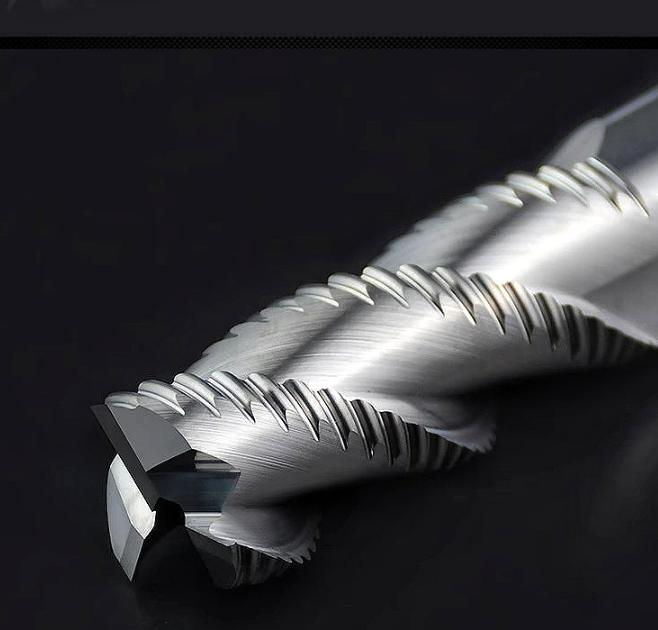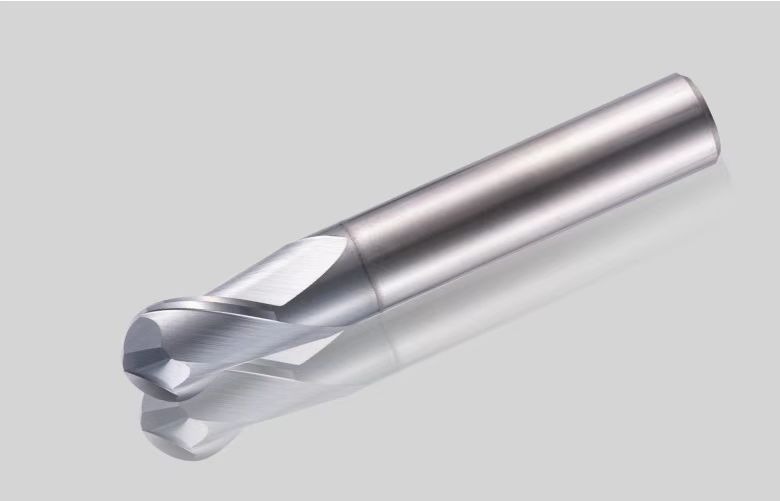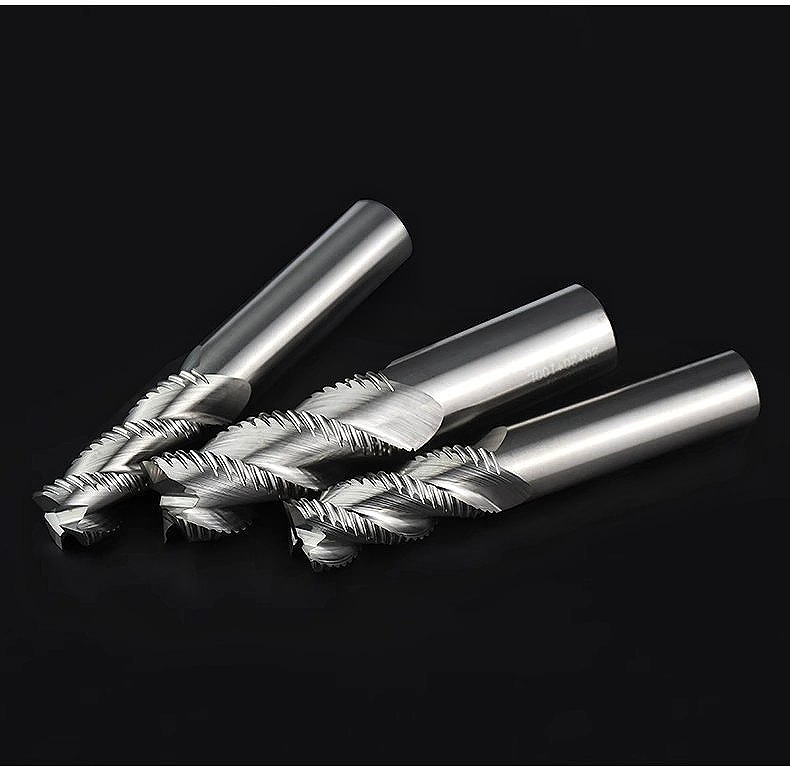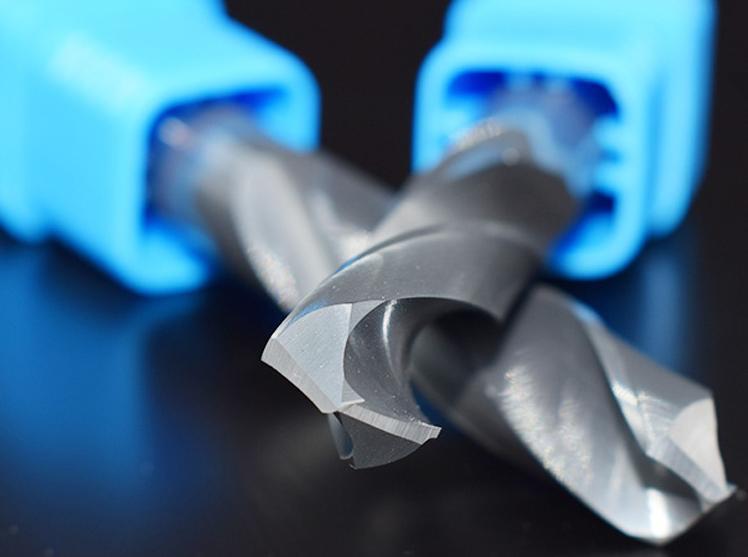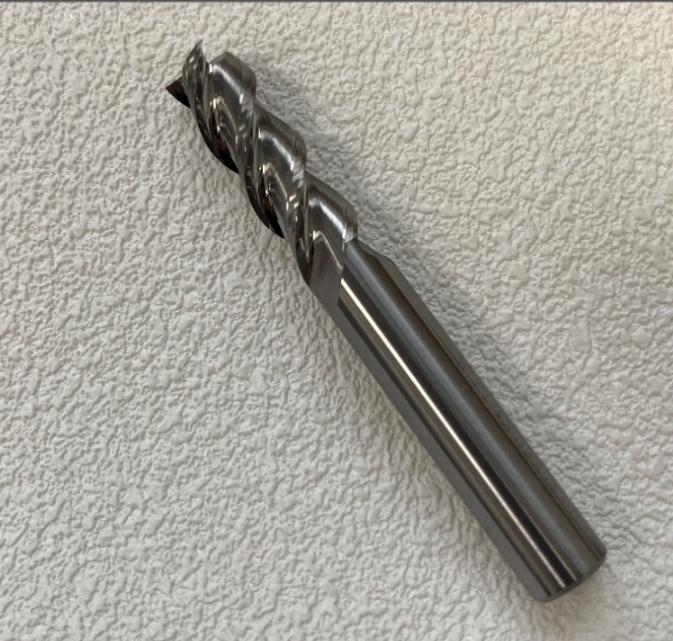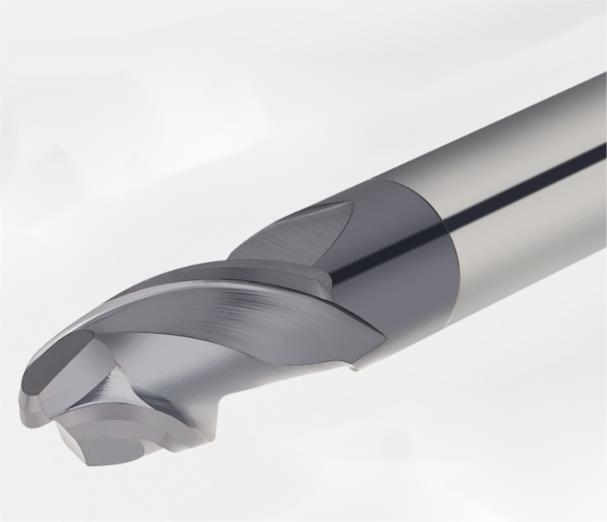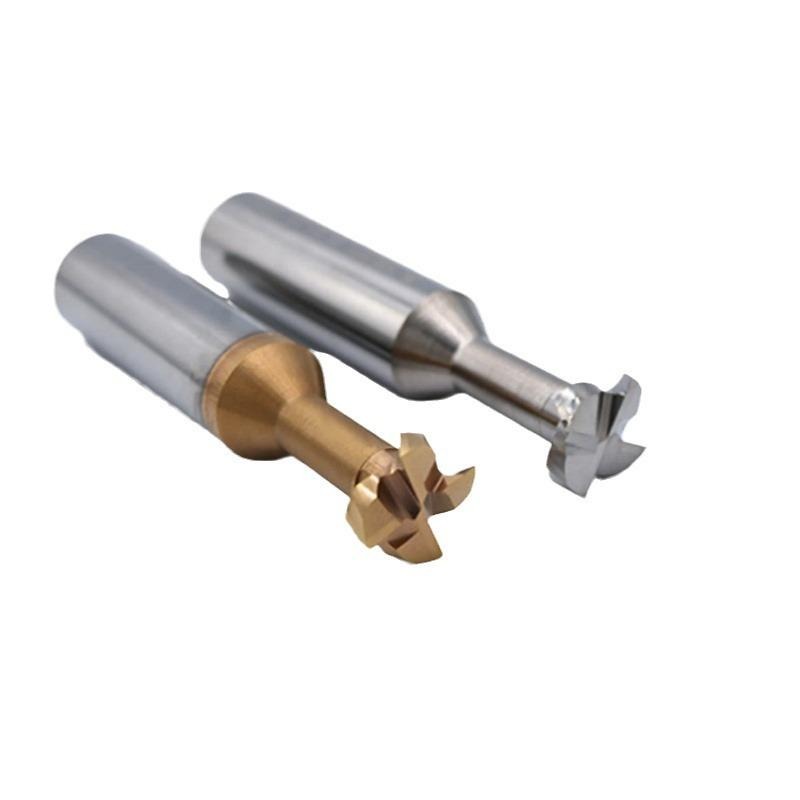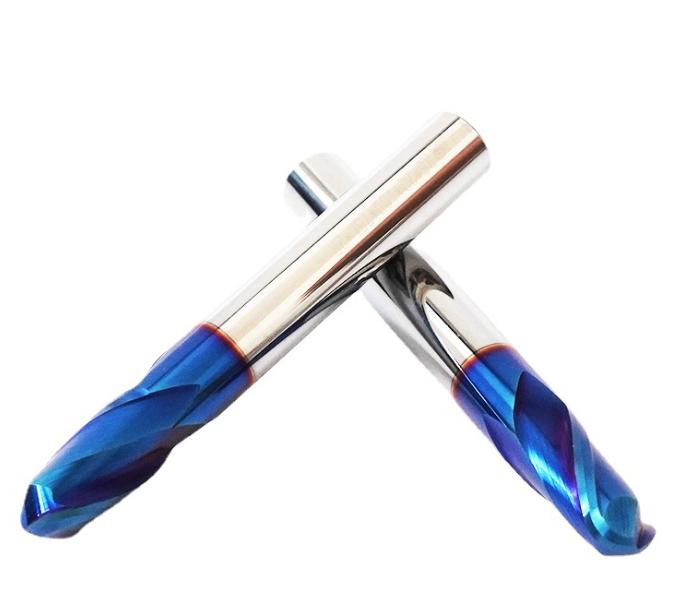The Role of Tungsten Steel Milling Cutters in Optimizing High-speed Machining
Table of Contents
High-speed machining (HSM) has revolutionized modern manufacturing, enabling the production of complex components with remarkable speed and precision. Central to the success of HSM is the selection of appropriate cutting tools, and among these, tungsten steel milling cutters have proven to be invaluable. These tools, known for their durability and efficiency, play a crucial role in optimizing high-speed machining processes across various industries.
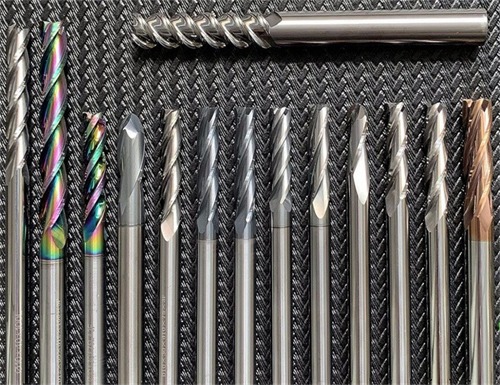
What are Tungsten Steel Milling Cutters
Tungsten steel milling cutters are high-performance cutting tools designed for efficient and precise machining. These cutters are made from a metallurgical alloy containing iron, tungsten, and carbon, providing exceptional hardness, wear resistance, and heat resistance. They are ideal for high-speed machining applications, offering benefits such as increased cutting speeds, high accuracy and superior surface finish. They are widely used across various industries, including aerospace, automotive, and precision engineering, due to their ability to machine a wide range of materials with high accuracy and superior surface finishes. Tungsten steel milling cutter also offer extended tool life, reducing operational costs and increasing overall productivity.
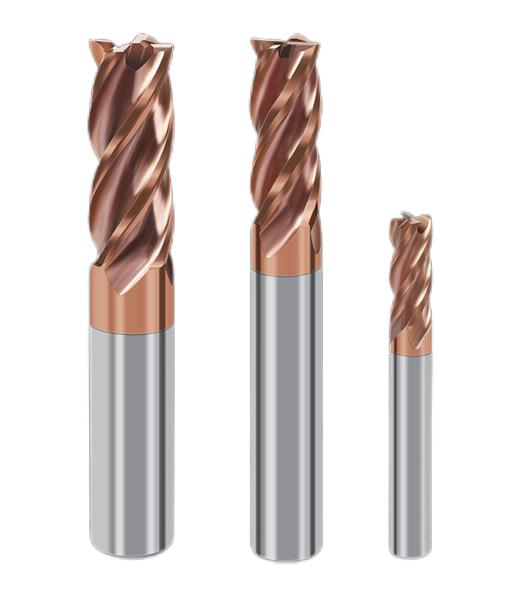
Benefits of Tungsten Steel Milling Cutters in High-speed Machining
1. Superior Material Properties
Tungsten steel, often referred to as tungsten carbide, is renowned for its exceptional hardness and wear resistance. This material is created by combining tungsten carbide particles with a metallic binder, usually cobalt, resulting in a composite that can endure the rigors of high-speed machining. The hardness of tungsten steel ensures that milling cutters made from this material can maintain a sharp cutting edge even under extreme conditions, such as high temperatures and heavy loads. This makes them ideal for machining hard materials like steel, titanium, and superalloys, which are commonly used in aerospace, automotive, and precision engineering industries.
2. Enhanced Machining Efficiency
The efficiency of high-speed machining is significantly influenced by the performance of the cutting tool. Tungsten steel milling cutters excel in this area by allowing for higher cutting speeds and feeds without sacrificing tool life. The result is faster material removal rates, which directly contribute to reduced cycle times and increased productivity. Additionally, the ability of tungsten steel to maintain a consistent cutting edge ensures a superior surface finish, minimizing the need for additional finishing operations and thereby streamlining the production process.
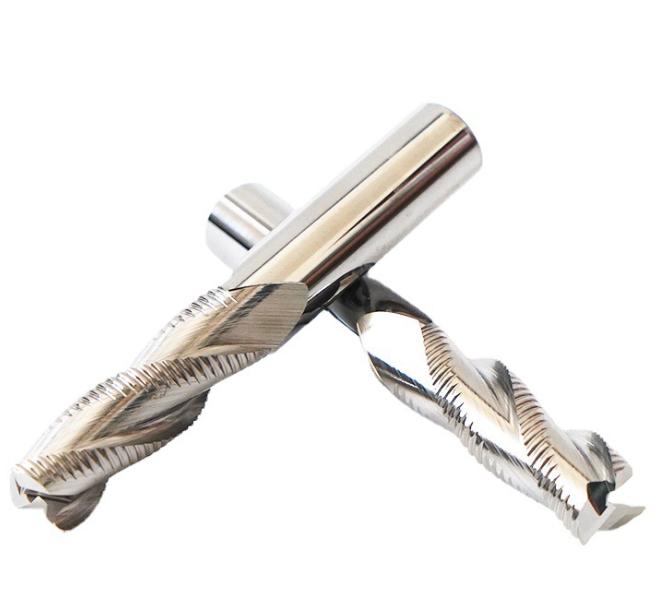
3. Precision and Stability
Precision is paramount in high-speed machining, especially when dealing with complex geometries and tight tolerances. Tungsten steel milling cutters provide the necessary stability to achieve this level of precision. Their rigidity and resistance to deformation mean that they can maintain their cutting path accurately, even at high speeds. This stability is particularly important when machining intricate parts where even minor deviations can lead to significant defects. As a result, tungsten steel cutters are often the tool of choice in applications where precision is non-negotiable.
4. Longevity and Cost-Effectiveness
One of the standout benefits of tungsten steel milling cutters is their extended tool life. The wear resistance of tungsten steel means that these cutters can withstand more machining cycles compared to tools made from other materials. This longevity translates to fewer tool changes, less downtime, and ultimately lower operational costs. For manufacturers, the initial investment in tungsten steel cutters is quickly offset by the reduction in tool replacement costs and the increase in overall machining efficiency.
5. Versatility Across Applications
Tungsten steel milling cutters are versatile, capable of machining a wide variety of materials. Whether it’s the high-speed cutting of hardened steel or the precision machining of non-ferrous metals, tungsten steel cutters deliver consistent performance. Moreover, their ability to handle both roughing and finishing operations means that a single tool can often be used throughout the entire machining process, further simplifying tool management and reducing costs.
This chart highlights the diverse applications of tungsten steel milling cutters in high-speed machining across various industries.
| Application | Details |
| Aerospace Industry | Machining high-strength materials like titanium alloys and superalloys for components such as turbine blades, airframe structures, and engine parts. |
| Automotive Industry | High-speed machining of engine components, transmission parts, and precision molds, ensuring tight tolerances and high surface quality. |
| Mold and Die Manufacturing | Creating complex molds and dies with intricate geometries, where precision and tool durability are critical. |
| Medical Device Manufacturing | Producing medical implants and surgical tools from biocompatible materials, requiring precision and excellent surface finish. |
| Precision Engineering | Machining small, intricate parts with tight tolerances for use in electronics, optical devices, and other high-precision applications. |
| Energy Sector | Machining components for power generation, such as turbine parts and oil and gas equipment, where material hardness and tool longevity are crucial. |
| Tool and Cutter Manufacturing | Producing other cutting tools and industrial equipment, where precise geometry and material consistency are essential. |
| Defense Industry | Machining of high-strength materials for military equipment, ensuring durability and reliability under extreme conditions. |
| Electronics Manufacturing | Creating precision components for electronic devices, where miniaturization and accuracy are paramount. |
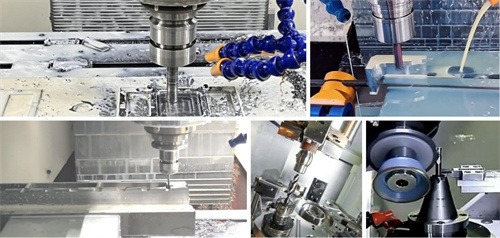
6. Thermal Stability and Heat Resistance
High-speed machining generates significant heat, which can negatively impact both the workpiece and the tool. Tungsten steel’s excellent thermal stability ensures that the cutting tool can withstand high temperatures without losing its hardness or sharpness. This resistance to thermal deformation not only maintains the quality of the cut but also extends the tool’s life, making it more reliable in demanding applications.
7. Advancements in Coating Technology
The performance of tungsten steel end mill is further enhanced by advanced coating technologies. Coatings such as titanium nitride (TiN), titanium carbonitride (TiCN), and aluminum titanium nitride (AlTiN) are often applied to these cutters to improve their wear resistance, reduce friction, and further enhance their thermal stability. These coatings enable the cutters to achieve even higher cutting speeds and prolong their service life, making them more cost-effective in the long run.
8. Supporting Sustainable Manufacturing
As the manufacturing industry increasingly focuses on sustainability, the use of durable tools like tungsten steel milling cutters aligns well with these objectives. Their long tool life reduces the frequency of replacements, leading to less waste. Additionally, the efficiency they bring to the machining process can reduce energy consumption, contributing to more environmentally friendly production practices.
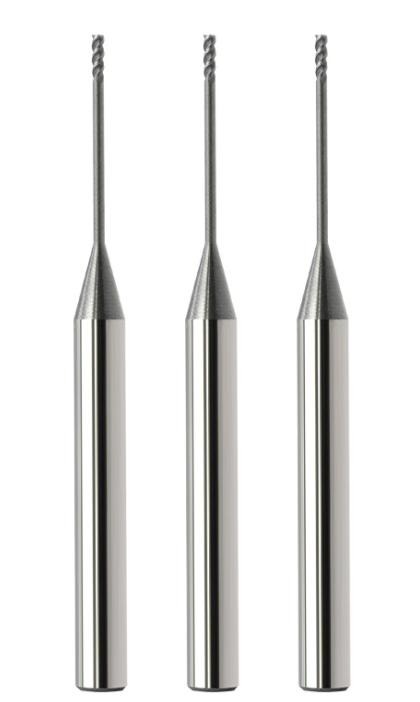
Considerations of Tungsten Steel Milling Cutters in Optimizing High-speed Machining
Here’s a chart providing a concise overview of the key factors to consider when using tungsten steel milling cutters for high-speed machining optimization.
| Consideration | Details |
| Material Compatibility | Ensure compatibility with materials like hardened steels, titanium alloys, and non-ferrous metals. |
| Cutting Speed and Feed Rate | Adjust speeds and feeds to maximize efficiency without causing excessive heat or tool wear. |
| Tool Coating | Use coatings like TiN, TiCN, or AlTiN to improve wear resistance, reduce friction, and enhance thermal stability. |
| Tool Geometry | Select appropriate tool geometry (flute design, rake angle, helix angle) for efficient chip evacuation and minimized deflection. |
| Cooling and Lubrication | Implement effective cooling/lubrication strategies to manage heat and prolong tool life. |
| Machine Rigidity and Stability | Ensure the machining setup is rigid and stable to prevent vibrations and maintain accuracy. |
| Tool Wear Monitoring | Regularly monitor tool wear to prevent unexpected failures and maintain machining quality. |
| Optimization of Cutting Parameters | Continuously adjust cutting parameters to balance productivity, tool life, and surface finish. |
| Cost-Benefit Analysis | Evaluate cost-effectiveness considering the initial investment, tool life, and increased efficiency. |
| Environmental Considerations | Implement sustainable practices by reducing tool waste and energy consumption. |
These considerations are crucial for leveraging the full potential of tungsten steel milling cutters in high-speed machining, ensuring optimal performance, precision, and cost-efficiency.
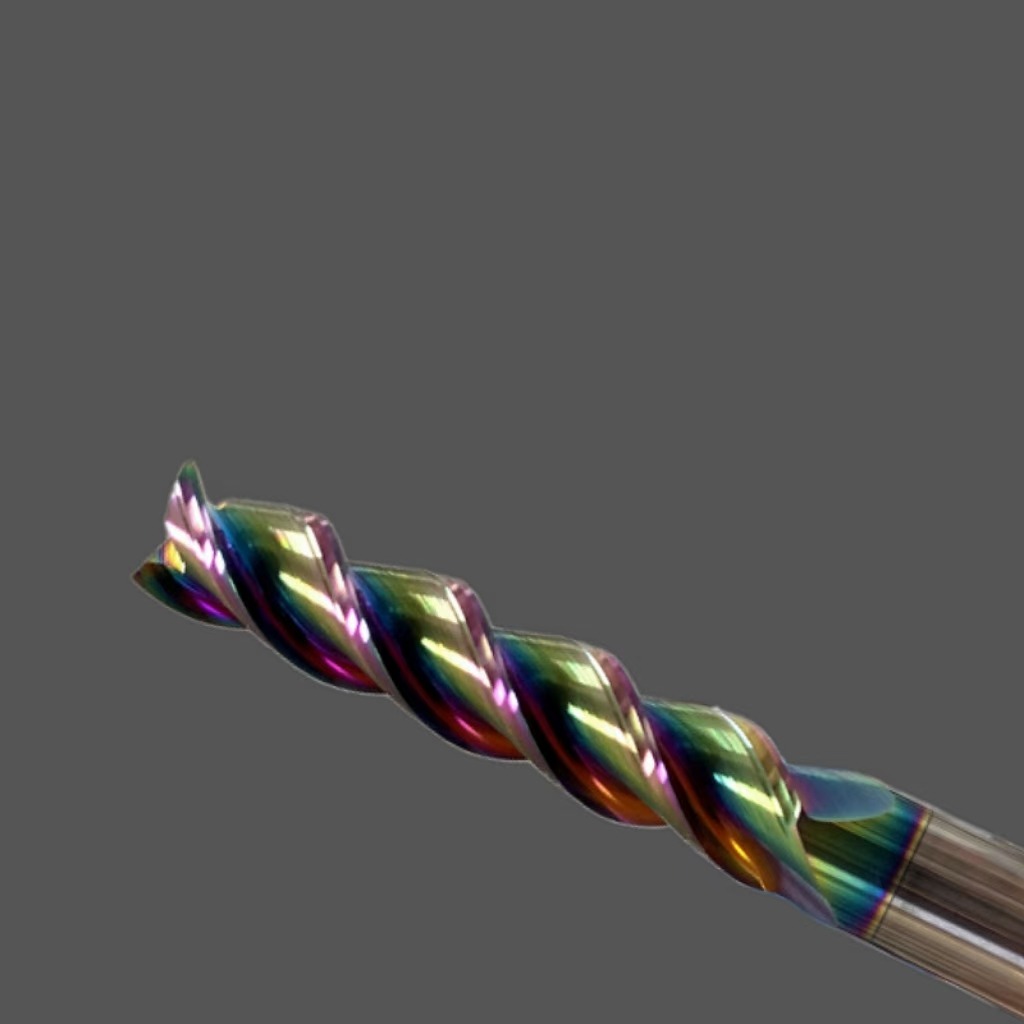
Overall, Tungsten steel milling cutters are a critical component in optimizing high-speed machining, offering unparalleled durability, precision, and efficiency. Their outstanding material properties, combined with advancements in tool design and coating technologies, make them become ideal choices for manufacturers seeking to enhance productivity while maintaining the highest standards of quality.

